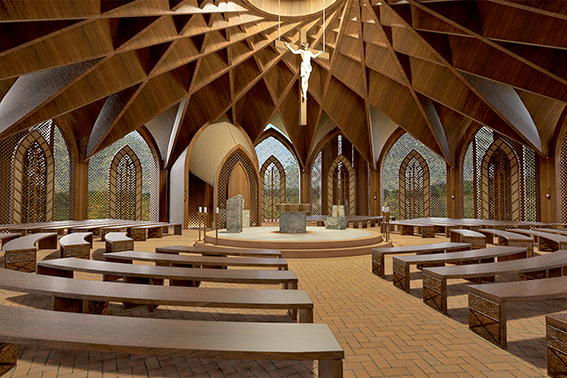Brazilian religious heritage - for culture, for the sacred
The inculturation as mission of the architect in the projects of the indigenous communities and originated by the immigration
DOI:
https://doi.org/10.17979/aarc.2020.7.0.6296Keywords:
Brazil, sacred architecture, religious heritage, indigenous church, inculturationAbstract
Civilized by Christianity, Brazil, with over than 500 years of history, built temples under the influence and inspiration of its colonizers that contributed to the culture of this country of continental dimensions. Indigenous brothers in Christ, although numerically diminished, have a constructive identity and also play a key role in the evaluation of Brazilian architecture. After five centuries, the relationship of the Brazilian people with their temples goes through a moment of uncertainty with questionable architectural productions and most of the religious heritages degraded. Nevertheless, the mystagogical understanding of the sacred space after Vatican II is still a clearly evolving subject. Through this scenario, this article promotes debate about the role of the missionary architect in the interventions of the Brazilian sacred heritage and brings four case studies that demonstrate both the realities of inculturation for the implantation of an indigenous Church and those inherited from the architecture of immigration.
Downloads
Metrics
References
Braga, Marcia. 2003. Conservação e Restauro: Arquitetura Brasileira. Rio de Janeiro: Rio.
Concílio Ecumênico Vaticano II. 2011. Constituição Sacrosanctum Concilium sobre a Sagrada Liturgia (SC). São Paulo: Paulinas.
Marochi, Maria Angélica. 2007. De Freguesia a Diocese: a trajetória da Igreja Católica em São José dos Pinhais, 1690-2007. Curitiba: Travessa dos Editores.
Pastro, Claudio. 1992. Itapeva: Um tesouro em vaso de barro. São Paulo: Casa S. Lucas.
Pastro, Claudio. 2001. Arte Sacra. São Paulo: Paulinas.
Pio XII. 1939. Carta Encíclica Summi Pontificatus. Roma: Libreria Editrice Vaticana.
















